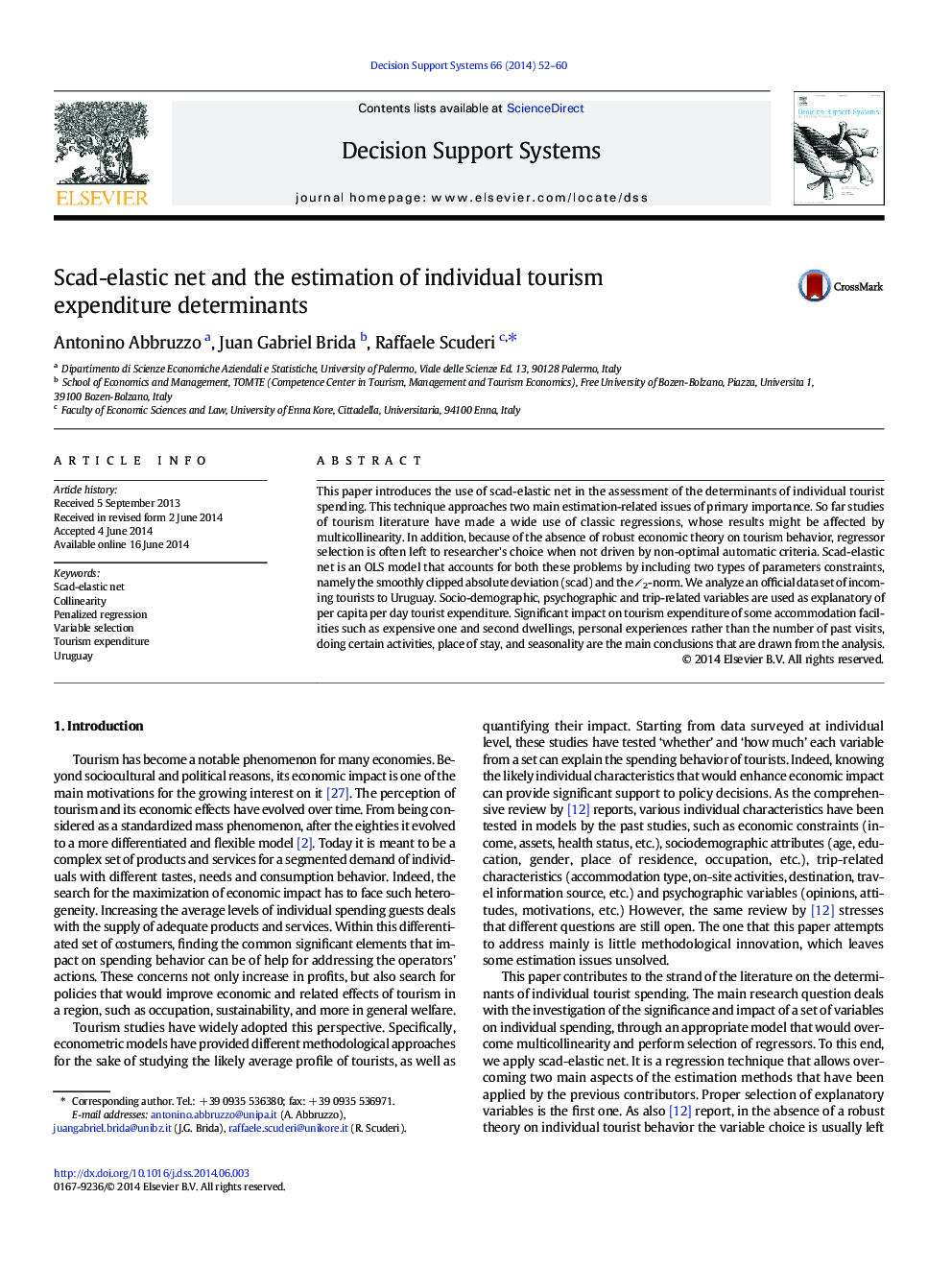| Article ID | Journal | Published Year | Pages | File Type |
|---|---|---|---|---|
| 552035 | Decision Support Systems | 2014 | 9 Pages |
•We use scad-elastic net to analyze tourist expenditure in Uruguay.•Our penalized regression approaches overcome some limitations of classic models.•The technique handles multicorrelation and regressor selection.•Accommodation is crucial to predict levels of spending.•Space and seasonality effect also emerge.
This paper introduces the use of scad-elastic net in the assessment of the determinants of individual tourist spending. This technique approaches two main estimation-related issues of primary importance. So far studies of tourism literature have made a wide use of classic regressions, whose results might be affected by multicollinearity. In addition, because of the absence of robust economic theory on tourism behavior, regressor selection is often left to researcher's choice when not driven by non-optimal automatic criteria. Scad-elastic net is an OLS model that accounts for both these problems by including two types of parameters constraints, namely the smoothly clipped absolute deviation (scad) and the ℓ2-norm. We analyze an official dataset of incoming tourists to Uruguay. Socio-demographic, psychographic and trip-related variables are used as explanatory of per capita per day tourist expenditure. Significant impact on tourism expenditure of some accommodation facilities such as expensive one and second dwellings, personal experiences rather than the number of past visits, doing certain activities, place of stay, and seasonality are the main conclusions that are drawn from the analysis.
